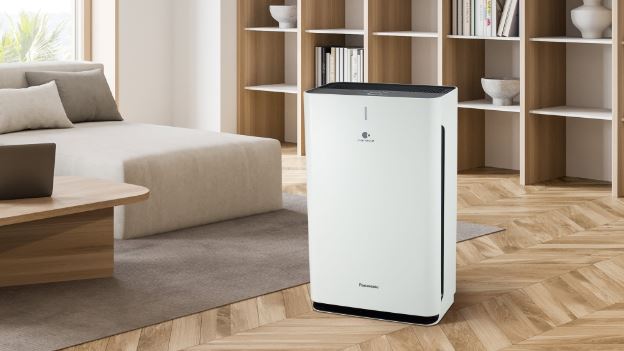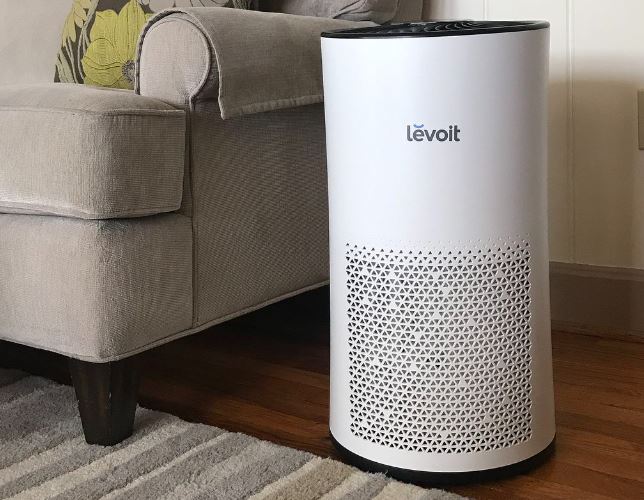In a health-conscious world, the air we breathe in has become an increasingly important consideration for individuals across the globe. With rising pollution levels and a deeper insight of the influence of indoor air quality on overall health on our health, it's no surprise that the demand for air purifiers is on the rise.
Air purifiers are appliances that eliminate airborne contaminants in a room, improving indoor air quality. They are especially advantageous for those with allergies, asthma, or respiratory concerns as they can significantly reduce the levels of allergens, pollutants, and irritants in the air. For those without respiratory concerns can take advantage of air purifiers, as they give added assurance and protect against airborne pathogens.
This comprehensive overview will explore in detail the fascinating realm of air purifiers, discussing the perks they offer, the different types available, key considerations when making a purchasing decision, and optimizing your purifier's performance. By the end, you should have a comprehensive understanding of air purifiers and be able to decide confidently about whether investing in one is the smart move for your household.

Unraveling Indoor Air Contaminants and Their Effects on Well-being
To understand why air purifiers are essential, it's vital to understand the variety of contaminants they address and the possible effects of exposure to these contaminants.
Indoor air pollutants can be broadly categorized into three primary types:
- Airborne Particles: This includes solid and liquid droplets present in the air. Examples include dust, smoke, pollen, pet dander, mold spores, and more. Particulate matter can lead to respiratory complications and trigger allergic reactions.
- Volatile Organic Compounds (VOCs): VOCs are gases released by solids and liquids. Sources of VOCs include aerosol sprays, cleaning products, paints, and pesticides, among others. Exposure to VOCs can lead to eye, nose, throat irritation, headaches, and stomach discomfort.
- Biological Hazards: These include various microorganisms, including bacteria, viruses, mold, and mildew. They can cause a spectrum of health concerns, from mild allergic reactions to severe infections.
The effects of these pollutants on human health can greatly vary. For those suffering from respiratory ailments or weakened immune systems, exposure to indoor air pollutants can lead to severe complications. For those in good health, chronic exposure to certain pollutants can contribute to the development of respiratory issues and other health problems over time.

The Science Behind Air Purifiers
Air purifiers use a range of physical and chemical mechanisms to capture and remove pollutants from the air. Understanding the underlying principles employed by purifiers will help you understand their efficiency and the different types available on the market.
Here are the primary mechanisms and innovations used in air purifiers:
- Mechanical Filtration: This is the most widely used approach used in air purifiers. It involves using filters to trap particles as air is passed through the filtration system. The filters can be made from various materials, each designed to target specific particle sizes and types. For example:
- Pre-filters: These are usually the initial barrier, catching larger particles like hair and dust.
- HEPA Filters: The Gold Standard: HEPA filters are highly effective at trapping ultrafine particles, including dust mites, pollen, bacteria, and viruses. To be labeled a genuine HEPA filter, it must effectively capture particles as small as 0.3 microns, with a minimum efficiency of 99.97%.
- carbon filtration: These filters are designed to adsorb odors, VOCs, and gaseous pollutants.
- The Power of Ionization: Ionizers use charged particles to create an abundance of negative ions, which latch onto airborne particles. The charged particles are drawn to nearby surfaces or the purifier itself.
- Ozone Generators: Some air purifiers use ozone as a potent disinfectant to destroy contaminants. While effective, excessive ozone exposure carries risks so these types of purifiers should be used with caution and only in unoccupied spaces.
- UV Light: Shining a Light on Purification: UV light can be used to destroy biological contaminants like bacteria, viruses, and mold spores. UV light is commonly paired with filtration to capture particles first, followed by UV light to neutralize any remaining biological threats.
The Ultimate Air Purifier Guide
With a variety of choices available, selecting the perfect purifier can be a challenging endeavor. It's important to consider a range of criteria to ensure you make the right choice for your particular needs and room size.
Here are some key considerations:
- Room Size: Air purifiers are typically rated according to room size, so it's important to choose a model that can effectively handle the square footage of the room. Most purifiers will list a suggested room size or CADR rating, which indicates the amount of purified air circulated per minute.
- Type of Contaminants: Identify the types of pollutants you want to target. If you suffer from allergies, look for a purifier with a HEPA filtration system. For reducing unwanted smells, consider a model with a activated carbon filter. If you're concerned about viral and bacterial threats, a purifier with UV light disinfection might be best.
- Quiet Operation: Air purifiers can produce varying levels of noise, so if you plan to use it in a serene environment, look for models with a low-noise or sleep mode.
- Long-term Considerations: Consider the ongoing costs and maintenance requirements of the purifier. HEPA filters generally require replacement every 6 to 12 months, depending on use and environmental factors. Remember to budget for filter replacements when making your choice.
- Additional Features: Many purifiers offer innovative smart capabilities like wireless connectivity, air quality sensors, and smart modes, allowing remote control and monitoring. These features can make your purifier more user-friendly and efficient.
Maximizing the Benefits of Your Air Purifier
Once you've made your selection and installed it, there are several things you can do to ensure it operates at peak performance and delivers the maximum benefits:
- Place it in the Right Location: Position your purifier in an open area, away from walls and furniture, to ensure optimal airflow. Avoid placing it near open windows or doorways as drafts can disrupt the purifier's effectiveness.
- Consistent Use: For the best results, it's recommended to run your purifier regularly. Many models have low-energy settings or automatic modes that adjust the fan speed based on air quality, so you can maintain fresh air without excessive energy costs.
- Filter Maintenance: Regularly adhere to the recommended filter replacement schedule. Over time, filters become saturated with particles, affecting efficiency. Set a reminder for filter changes so you don't forget.
- Minimize Indoor Pollutants: Alongside using an air purifier, take steps to minimize indoor air pollutants. This could include vacuuming, dusting, choosing natural cleaning alternatives, and limiting aerosol and chemical products.